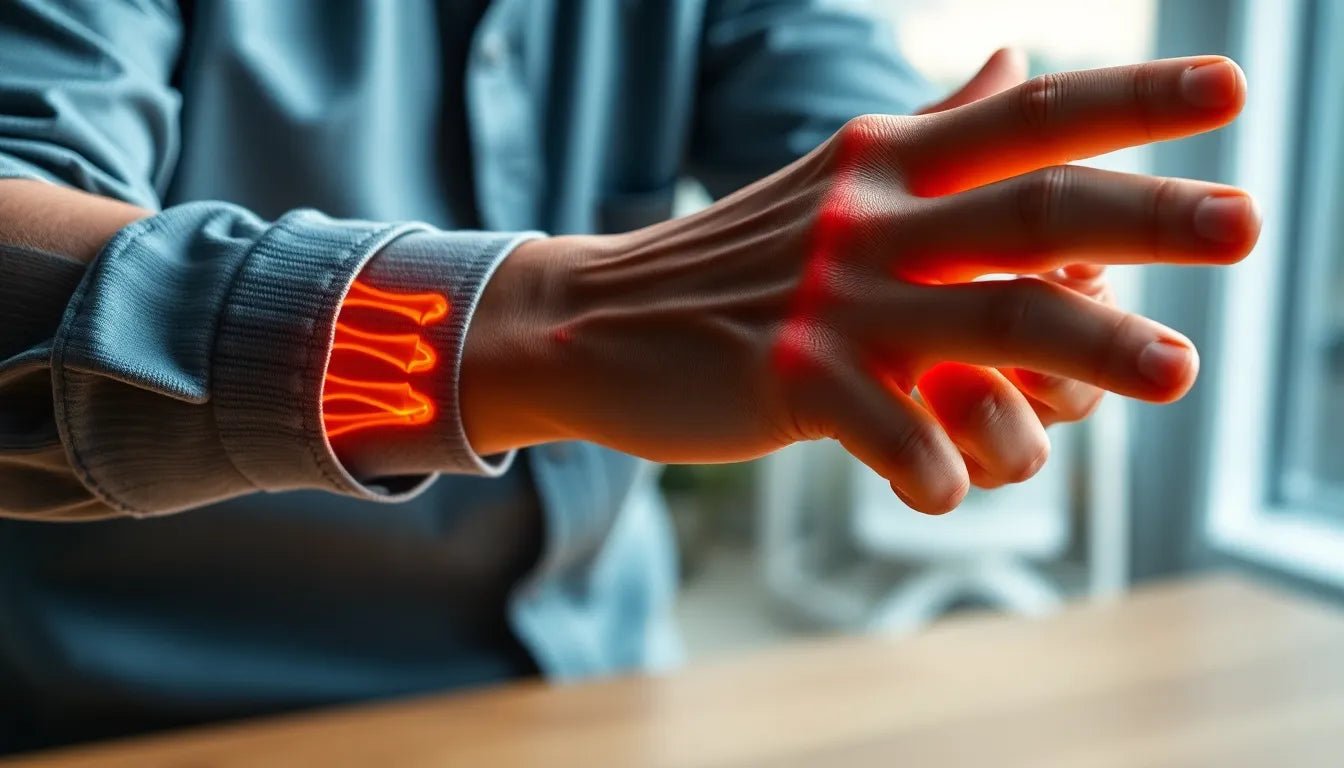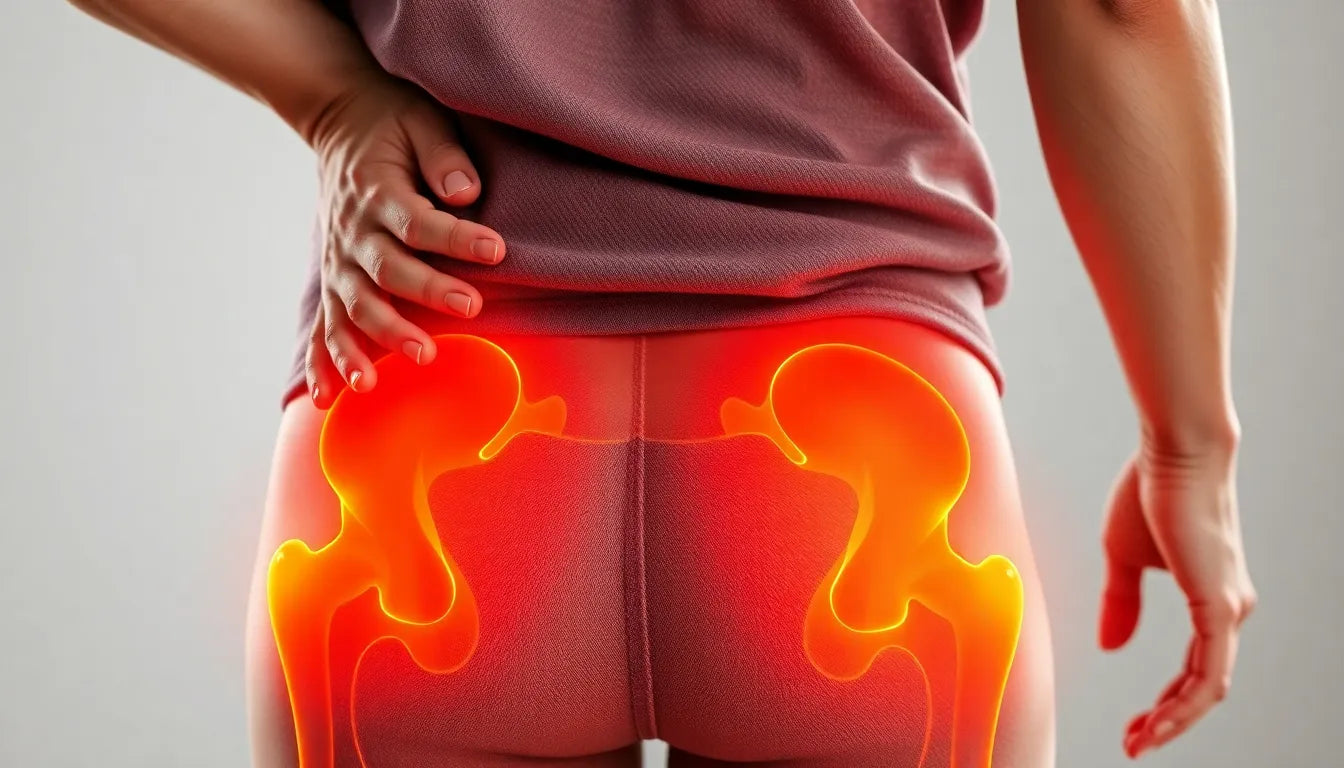Experiencing hip pain while lying down is a common issue that affects many individuals, disrupting sleep and impacting overall well-being. This discomfort, often intensified during the night, can lead to restless nights and groggy mornings, reducing the quality of life. Addressing hip pain is crucial not only for improving sleep but also for enhancing daily functioning, as chronic pain can hinder everyday activities and lead to long-term health issues.
Understanding the impact of hip pain on sleep
Hip pain that occurs in a lying position can significantly disrupt sleep patterns, resulting in fatigue and decreased productivity during the day. The discomfort can make it challenging to find a comfortable sleeping position, leading to frequent awakenings and a reduced amount of deep sleep. This lack of restful sleep can accumulate over time, causing irritability, difficulty concentrating, and even an increased risk of accidents due to drowsiness.
Moreover, the consequences of poor sleep extend beyond physical fatigue. Chronic sleep deprivation can lead to emotional distress, including heightened stress and anxiety, further exacerbating the perception of pain. Therefore, understanding the underlying causes of hip pain and seeking effective relief strategies is essential for those affected.
The dual purpose of understanding and relief
Individuals experiencing hip pain while lying down often have a dual intention: they seek to understand the root causes of their discomfort and find practical solutions for relief. This quest for knowledge and comfort is driven by the desire to improve sleep quality and overall health. By gaining insight into the potential causes, such as inflammation, degenerative conditions, or muscle tension, individuals can better address their specific issues.
Practical solutions, ranging from lifestyle adjustments to ergonomic aids, can play a significant role in alleviating hip pain. For instance, altering sleeping positions, using supportive pillows, and incorporating gentle stretches into daily routines can provide significant relief. Additionally, consulting with healthcare professionals for tailored advice and treatment options can further enhance the management of hip pain.
In summary, addressing hip pain in a lying position is vital for improving sleep quality and overall well-being. By understanding the impact of this common issue and exploring effective relief strategies, individuals can take proactive steps towards a more restful sleep and a healthier lifestyle.
Causes of hip pain while lying down
Understanding the root causes of hip pain in a lying position is essential for effective management and relief. One common cause is inflammation and bursitis, particularly trochanter bursitis, which can result in significant discomfort when lying on the affected side. This condition is characterized by symptoms such as warmth, redness, and swelling around the hip joint, often exacerbated by pressure or prolonged lying on the side.
Another prevalent cause is degenerative conditions like osteoarthritis. This condition involves the gradual wear and tear of the hip joint, leading to stiffness and pain that can intensify during periods of inactivity, such as sleep. Similarly, a locked pelvis, where the pelvic bones are misaligned, can restrict movement and contribute to hip pain when lying down.
Muscle and nerve issues also play a significant role in nocturnal hip pain. Muscle tension, often due to poor posture or overuse, can lead to discomfort that becomes more noticeable at rest. Additionally, nerve irritation, such as sciatica, can cause sharp, shooting pains that disturb sleep. This occurs when the sciatic nerve is compressed or irritated, often resulting in pain that radiates down the leg.
Moreover, systemic and rheumatological disorders can manifest as persistent hip pain without an obvious injury. Conditions like rheumatoid arthritis or lupus can lead to chronic inflammation, causing pain and discomfort that require medical attention for proper diagnosis and management.
Impact on quality of life
The impact of hip pain on an individual's quality of life can be profound. Sleep disturbances are a common consequence, as the pain makes it difficult to find a comfortable sleeping position, leading to frequent awakenings and disrupted sleep cycles. This results in daytime fatigue, decreased productivity, and an overall decline in functionality.
Beyond the physical toll, there is also an emotional impact associated with chronic pain. Persistent discomfort can lead to stress and anxiety, as individuals become concerned about their health and the potential for worsening symptoms. This emotional burden can further exacerbate the perception of pain, creating a challenging cycle that affects both mental and physical well-being.
Diagnosis and evaluation
Recognizing when to seek medical advice is crucial for managing hip pain effectively. Certain symptoms, such as acute pain accompanied by fever or night sweats, should prompt immediate medical evaluation, as they may indicate an infection or other serious condition.
Diagnostic methods for hip pain typically involve a combination of physical examinations, patient history assessments, and imaging techniques like X-rays or MRIs. These tools help healthcare professionals identify the underlying cause of the pain and develop an appropriate treatment plan. In some cases, referral to a specialist, such as a rheumatologist, may be necessary for further evaluation and management.
Overall, understanding the causes and impacts of hip pain while lying down is essential for finding effective relief and improving quality of life. By recognizing symptoms that require medical attention and exploring diagnostic options, individuals can take proactive steps towards managing their pain and achieving a more restful sleep.
treatment and relief strategies for hip pain when lying down
Addressing hip pain in a lying position involves a combination of lifestyle adjustments, professional interventions, and ergonomic solutions. Making small changes in your daily routine can significantly alleviate discomfort and improve sleep quality.

Lumbar support belt
Adjustable belt supports and stabilises your lower back for relief and comfort.

Men's Posture Shirt™ - Black
Shirt with patented technology to support, align, and relieve muscle tension.
lifestyle and ergonomic adjustments
One of the simplest methods to reduce hip pain is to alter your sleeping position. Sleeping on your back with a pillow under your knees can help maintain proper spinal alignment and relieve pressure on the hips. Alternatively, if you prefer sleeping on your side, placing a firm pillow between your knees can prevent the upper leg from pulling your spine out of alignment, thus reducing stress on the hips.
Incorporating ergonomic products, such as orthopaedic pillows or mattresses designed to support the body's natural curves, can also provide significant relief. These products help distribute body weight evenly, reducing pressure points and discomfort.
professional interventions
For more persistent or severe hip pain, consulting with healthcare professionals is advisable. Physiotherapy can be particularly beneficial, as it focuses on strengthening the muscles around the hip joint, improving flexibility, and promoting better posture. A physiotherapist can also guide specific exercises tailored to your needs, helping to alleviate pain and prevent future occurrences.
In some cases, medical treatments such as medication or injections may be necessary to manage inflammation and pain. In rare instances, surgical intervention might be considered, particularly if there is significant joint damage or other structural issues.
ergonomic products
Ergonomic aids, such as specially designed pillows and mattresses, play a crucial role in managing hip pain. These products are designed to support the body's natural alignment, reducing pressure on the hips and promoting more restful sleep. While not a replacement for medical treatment, they can complement other strategies to enhance comfort and reduce pain.
practical tips for managing hip pain
At-home strategies can be highly effective in managing hip pain. Applying heat or cold therapy to the affected area can help reduce pain and inflammation. Heat therapy, such as using a warm compress or heating pad, can relax tense muscles, while cold therapy can numb sharp pain and decrease swelling.
Gentle stretching exercises, such as hip flexor stretches or yoga poses like the pigeon pose, can also aid in relieving tension and improving flexibility. Incorporating these stretches into your daily routine can help prevent stiffness and maintain joint health.
frequently asked questions
what are the common causes of hip pain when lying down?
Common causes include inflammation, such as trochanter bursitis, degenerative conditions like osteoarthritis, muscle tension, nerve irritation, and systemic disorders. These conditions can lead to pain, especially when lying on the affected side.
how can I tell if my hip pain is serious?
Red flags indicating the need for medical evaluation include acute pain accompanied by fever, night sweats, or unexplained weight loss. Persistent pain that does not improve with at-home treatments should also be assessed by a healthcare professional.
what are some effective ways to relieve hip pain at night?
Effective strategies include altering sleeping positions, using supportive pillows, applying heat or cold therapy, and performing gentle stretching exercises. Professional treatments like physiotherapy can also be beneficial.
can lifestyle changes help reduce hip pain?
Yes, lifestyle changes such as maintaining a healthy weight, engaging in regular exercise, and practicing good posture can significantly impact hip health and reduce pain.
when should I consult a healthcare professional?
Consult a healthcare professional if you experience severe pain, symptoms of infection, or if the pain persists despite trying various at-home remedies. Early intervention can prevent further complications and improve outcomes.
Kilder
- City-klinikken. ”Smerter i hoften når du står og går: Her er hva det kan bety og hva du kan gjøre med det.”
- Bindevevssykdommer.no. ”Hoftesmerter og revmatisk sykdom.”
- Lommelegen. ”Vanlige årsaker til smerter i hoften etter 60.”
- Fysioterapi Østerbro. ”Smerter i lysken og hoften.”
- Aleris. ”Hoftesmerter.”
- Dagbladet Lommelegen. ”Vondt i hoften: Dette er de vanligste årsakene.”
- Klinikk for Alle. ”Hva er din plage: Hoftesmerter.”


















